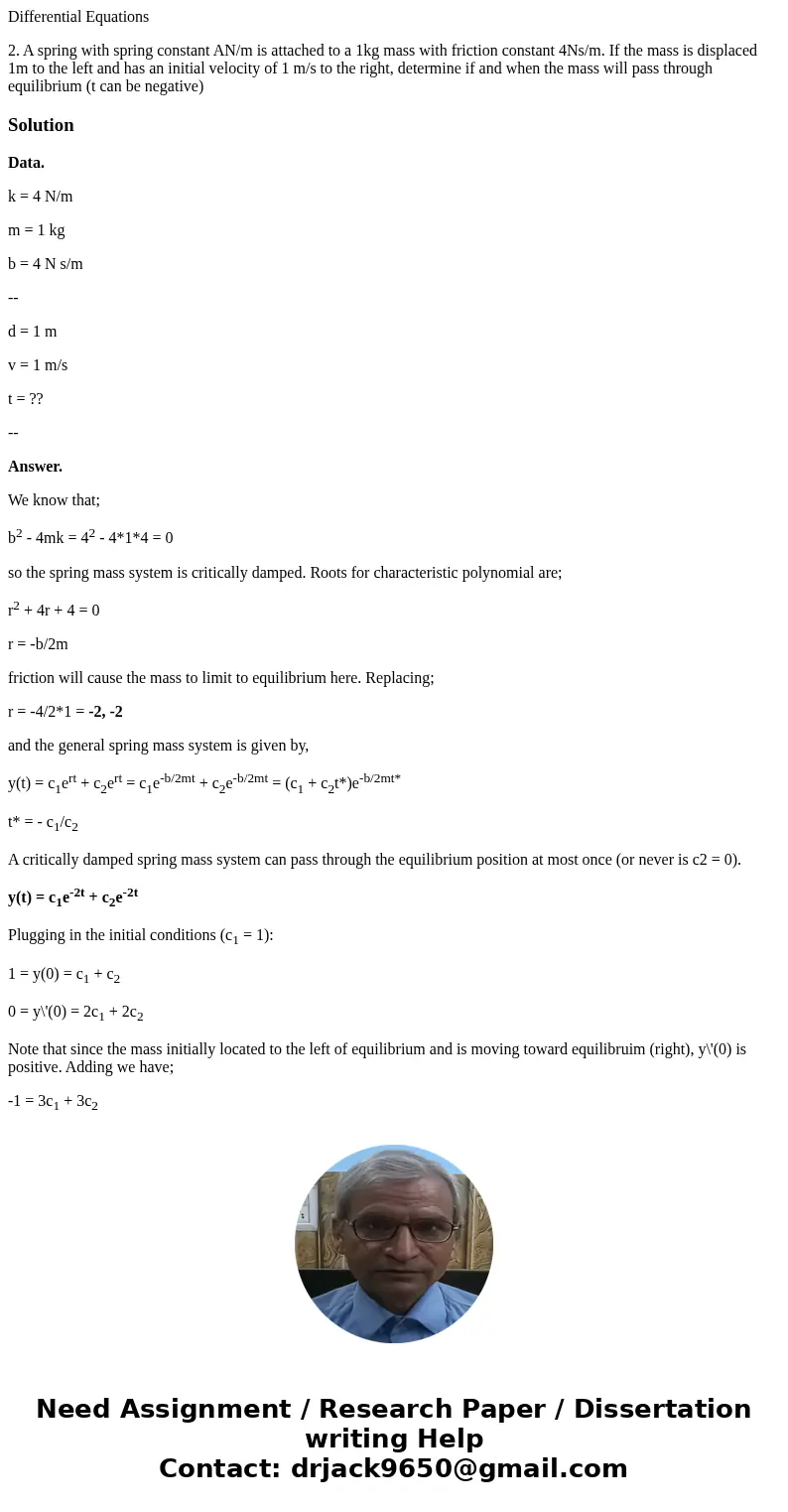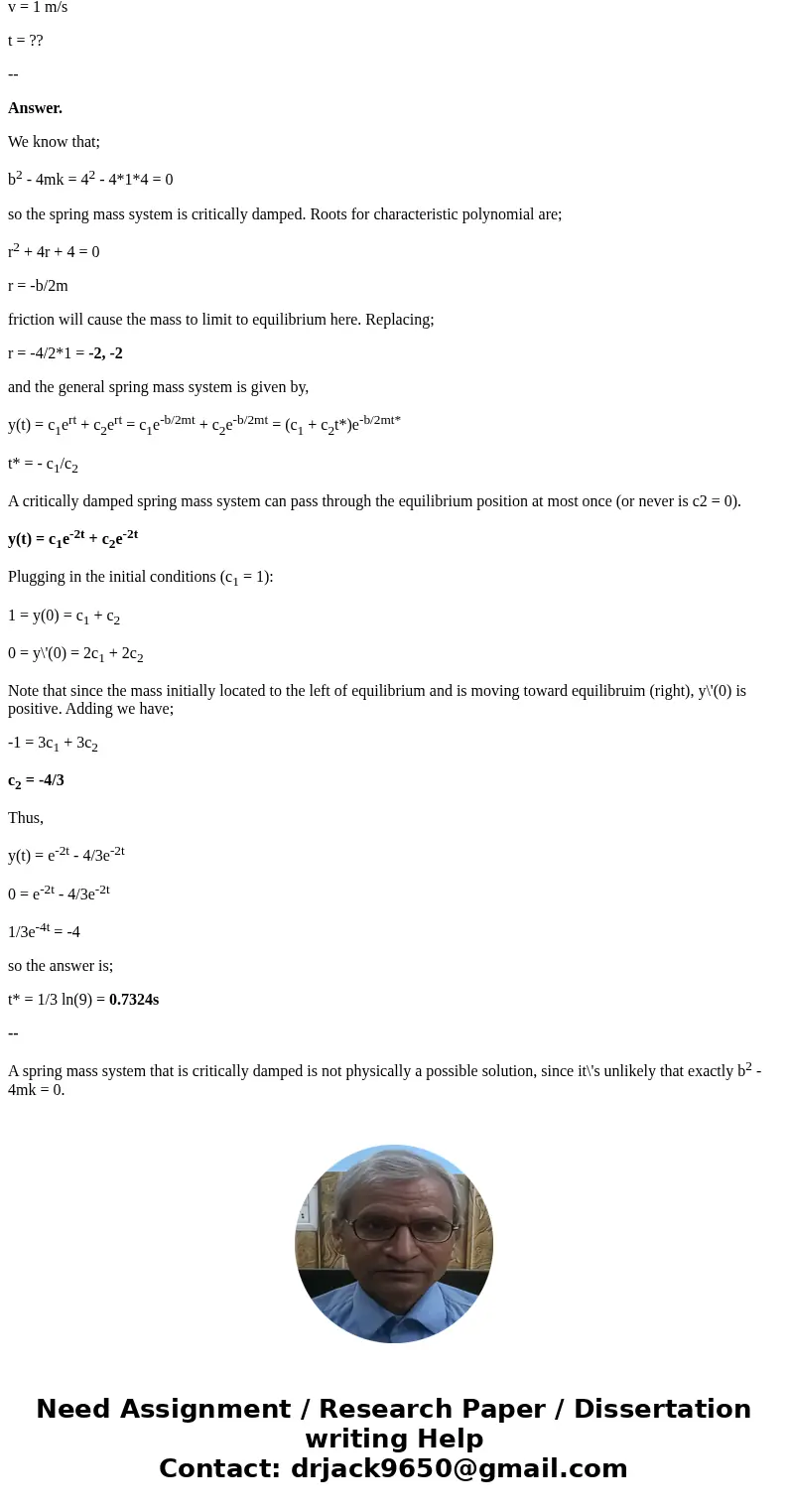Differential Equations 2 A spring with spring constant ANm i
Differential Equations
2. A spring with spring constant AN/m is attached to a 1kg mass with friction constant 4Ns/m. If the mass is displaced 1m to the left and has an initial velocity of 1 m/s to the right, determine if and when the mass will pass through equilibrium (t can be negative)Solution
Data.
k = 4 N/m
m = 1 kg
b = 4 N s/m
--
d = 1 m
v = 1 m/s
t = ??
--
Answer.
We know that;
b2 - 4mk = 42 - 4*1*4 = 0
so the spring mass system is critically damped. Roots for characteristic polynomial are;
r2 + 4r + 4 = 0
r = -b/2m
friction will cause the mass to limit to equilibrium here. Replacing;
r = -4/2*1 = -2, -2
and the general spring mass system is given by,
y(t) = c1ert + c2ert = c1e-b/2mt + c2e-b/2mt = (c1 + c2t*)e-b/2mt*
t* = - c1/c2
A critically damped spring mass system can pass through the equilibrium position at most once (or never is c2 = 0).
y(t) = c1e-2t + c2e-2t
Plugging in the initial conditions (c1 = 1):
1 = y(0) = c1 + c2
0 = y\'(0) = 2c1 + 2c2
Note that since the mass initially located to the left of equilibrium and is moving toward equilibruim (right), y\'(0) is positive. Adding we have;
-1 = 3c1 + 3c2
c2 = -4/3
Thus,
y(t) = e-2t - 4/3e-2t
0 = e-2t - 4/3e-2t
1/3e-4t = -4
so the answer is;
t* = 1/3 ln(9) = 0.7324s
--
A spring mass system that is critically damped is not physically a possible solution, since it\'s unlikely that exactly b2 - 4mk = 0.


 Homework Sourse
Homework Sourse